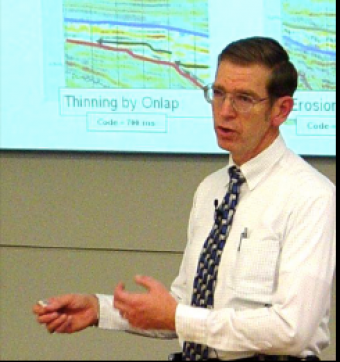Date: June 27, 2017 1h 10min Advanced
We are ready to plan the development of an offshore field, and thus one or more platforms will be needed to produce the field. Many questions arise, some related to geoscience, engineering, economics, legal, finance, etc. One main difference between exploration and development is scale - exploration looks at a range of stratigraphic intervals over one block to an entire basin, and development knows the stratigraphic interval(s) and works to a much more limited area. Therefore, development geoscientists and stratigraphers have to be more detail-oriented. I would divide the class time into four (4) segments: (1) review of Exercise 31; (2) introduction Lecture 32; (3) introduce part A and (4) part B of the exercises. The review of Exercise 31 has four (4) slides, and takes ~7 minutes to explain. Lecture 31 has fourteen (14) slides, and takes ~25 minutes to explain. The Introduction to Exercise 32a has five (5) slides, and takes ~8 minutes to explain. The introduction to Exercise 32b has twenty-five (25) slides, and takes ~30 minutes to explain. Plan about 70 minutes to explain and discuss all of this.
At the end of this lesson, students should be able to:

This course, based on teaching material from Dr. Fred Schroeder (formerly of Exxon/ExxonMobil), reflects on the geology and geophysics basics for the petroleum industry. General geology and basic geophysics are not required, but helpful with the material.